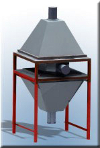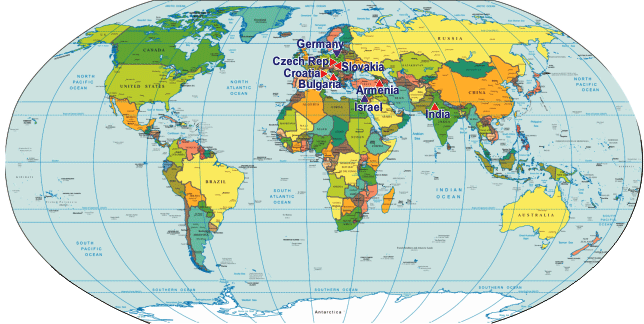Space Environmental Viewing and Analysis Network
 |
Sevan is largely continued within the framework of IHY. The IHY concluded in February, 2009, but was continued via the International Space Weather Initiative (ISWI).
ISWI is a program of international cooperation to advance the space weather science by a combination of instrument deployment, analysis and interpretation of space weather data from the deployed instruments in conjunction with space data, and communicate the results to the public and students. ISWI is a follow-up activity to the successful IHY 2007, but focusing exclusively on space weather.More... |
The goal of the ISWI is to develop the scientific insight necessary to understand the science, and to reconstruct and forecast near-Earth space weather. This includes instrumentation, data analysis, modeling, education, training, and public outreach.
The SEVAN network consists of hybrid detectors registering charged and neutral components of secondary cosmic rays. The network detects changing fluxes of different species of secondary cosmic rays at different altitudes and latitudes, thus turning into a powerful integrated device used to explore solar modulation effects. To facilitate SEVAN network creation, Cosmic Ray Division (CRD) of the Yerevan Physics Institute
 designs the basic SEVAN particle detector module, front-end electronics and advanced data acquisition system (ADAS). The CRD provides scintillator slabs, photomultipliers, electronics and ADS the host institutions.
designs the basic SEVAN particle detector module, front-end electronics and advanced data acquisition system (ADAS). The CRD provides scintillator slabs, photomultipliers, electronics and ADS the host institutions.
The host institutions, provides steel frame of the detector, lead filter and scintillator housings. Host institutions also are responsible for providing SEVAN detectors with uninterruptible Internet connection and electricity. CRD provides multivariate data visualization and analysis tools (see ADEI interface in the left menu). The on-line data from all 7 operating SEVAN sites are posted on-line (see the left menu) and could be downloaded from ADEI.
Worldwide network of particle detectors SEVAN: 10 years of operation
Worldwide network of particle detectors SEVAN; 10 years ofoperation (A. Chilingarian, T. Karapetyan)
Croatian Activities in Solar-Terrestrial Physics (SCOSTEP/PRESTO NEWSLETTER) 2020 (Dragan Rosa, Mateja Dumbović)

